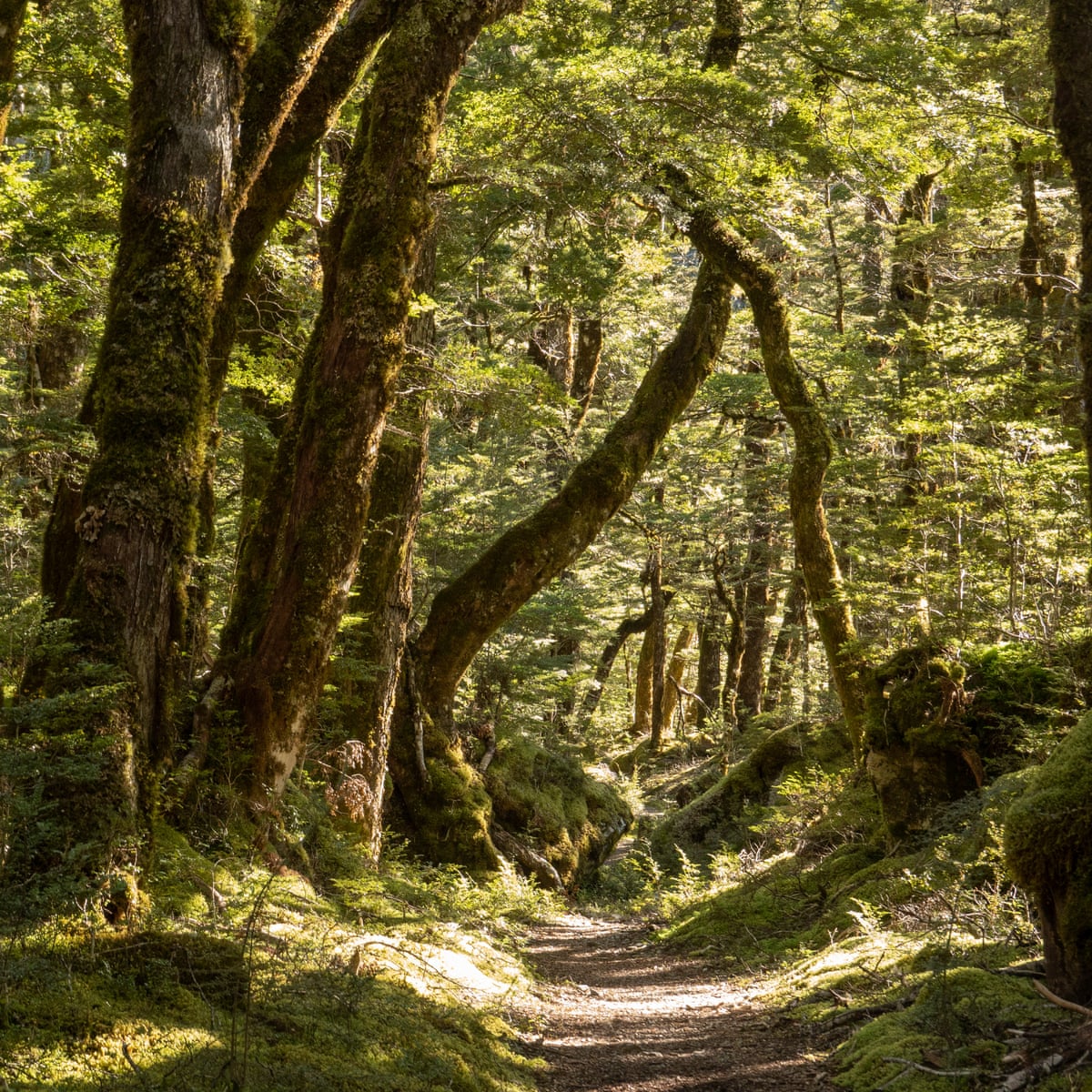The house where I grew up had miles of woods behind it, and my brother and I spent a lot of time walking the paths there or hiding in the brush, pretending to be early settlers or Indians. Those woods have long since been replaced by a housing development, but all my life I’ve loved walking woodland paths.
That’s why I’ve been curious about forest bathing, which sounds like a promising (and harmless) way to relieve stress during this seemingly endless pandemic. No bathing suit needed—it just involves spending time in a forest. But it turns out, there’s a lot more to it than that.
To bathe in a forest properly, you walk slowly among the trees, wandering aimlessly, and open up your senses to what you see, hear, smell and touch. For instance, you might focus on the sun, filtering through the branches overhead or on birdsongs or other sounds. Or you might pay attention to the aromas of plants, trees and earth, or run your fingers over the bark of a tree, or touch raindrops where they balance on leaves after a shower.
In the early 1980s, the Japanese began to research shinrin-yoku (forest bathing) and its impact on health. Since then, a host of studies have demonstrated that it can relieve stress—reflected in measurably lower levels of stress hormones in the blood. It can also boost your immune system, lower your blood pressure, heart rate and blood-sugar levels and speed up your recovery from illness.
Much of the research has been done on healthy women and men of all ages, but some studies have focused on older people. They’ve shown that elders with high blood pressure can bring it down by forest bathing, and those who have COPD can lessen inflammation and other symptoms—while also relieving stress and easing anxiety and depression.
How can a walk in the woods do all that? One theory is that phytoncides are responsible. They’re airborne, aromatic oils that trees and plants give off, which protect them from insects, bacteria and fungi.
Phytoncides also affect humans. Studies show that they increase natural killer cell activity in our immune systems (killer cells fight back when we’re infected by a virus or when tumors are forming). Oxygen levels are also higher among the trees, and that may help.
In addition, humans may have a deep, even evolutionary need to be connected to nature, which could be important in an era when Americans typically spend 93 percent of their time indoors. Research has shown that patients recovering from surgery heal faster, have fewer complications and need less pain medication if the windows of their hospital rooms look out on leafy trees, rather than on, say, a blank wall. That’s why most new hospitals now incorporate a garden.
But to me, these things don’t seem like the whole explanation. I suspect that the rest of it may come from the fact that forest bathing isn’t about just walking in the woods. It’s about focusing on your senses.
I go for a walk almost every day, and I’ve occasionally managed to open up to my surroundings that way, but it was by accident. I remember, however, what it felt like to stop stumbling around in my own mind, working on problems, and to simply be there in the moment. It’s a high and it’s immensely refreshing.
It reminds me of some of my experiences with meditation, which can also lower blood pressure, relieve stress and produce other benefits.
If this interests you, but you aren’t sure how to start forest bathing, you might look for a trained guide. The Association of Nature and Forest Therapy, which has trained more than 1,000 guides, can tell you where to find them.
The pockets of woods on my community’s campus are small, but the paths there were already my favorite places to walk, and there are parks not too far away. I hope to spend more time among the trees in the future and to practice real forest bathing. As the pandemic grinds on, I’m up for any promising way to relieve stress.

Flora Davis has written scores of magazine articles and is the author of five nonfiction books, including the award-winning Moving the Mountain: The Women’s Movement in America Since 1960 (1991, 1999). She currently lives in a retirement community and continues to work as a writer.



